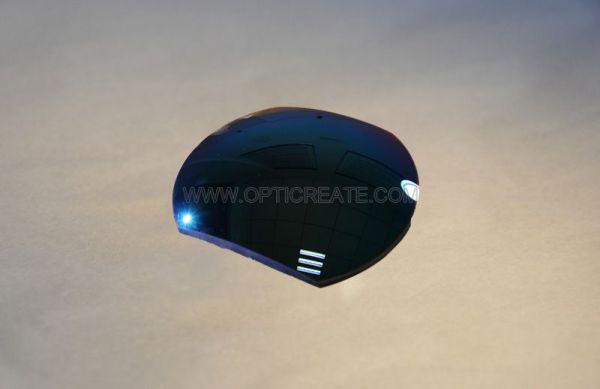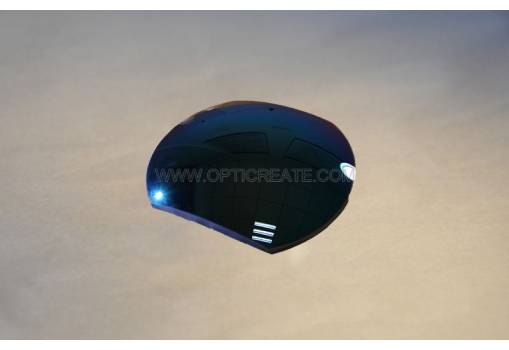Company News

What is an optical aspheric surface? Broadly speaking, aspheric surfaces are other surfaces that do not include spherical surfaces and flat surfaces. From an application perspective, aspheric surfaces can be divided into axisymmetric aspheric surfaces, aspheric surfaces with two symmetric surfaces, and free surfaces without symmetry.
Aspheric surfaces are usually divided into quadratic aspheric surfaces and higher-order aspheric surfaces. The secondary aspheric surface is the most widely used in Optical Assemblies and has a special position relative to other types of aspheric surfaces. Secondary aspheric surfaces can be divided into a pair of aspheric surfaces without aberration points and aspheric surfaces without aberration points. The former is widely used in various optical instruments and is the most common aspheric surface. The latter is widely used in optical systems that form deformed images. Higher-order aspheric surfaces can be divided into monotonous meridian curves and non-monotone surfaces.

IR Aspherical Lens
Although this kind of freeform surface has lost the characteristic of aspherical axis symmetry, it is still developed regularly around a coordinate origin. There are still rules to follow. There is another type of complex freeform surface that can only be defined by three-dimensional point coordinates. It is widely used in progressive multifocal glasses to achieve the purpose that the power is distributed according to a specific law.
Aspherical Lens Suppliertalked about the technical principle that aspheric lenses are used. The radius of curvature changes with the central axis to improve optical quality, reduce optical components, and reduce design costs. Aspheric lenses have unique advantages over spherical lenses, so they have been widely used in optical instruments, imaging, and optoelectronics industries, such as digital cameras, CD players, and high-end microscopic instruments.
In terms of spherical aberration calibration, aspheric lenses are used to replace spherical lenses. The most obvious advantage is that they can correct the spherical aberration caused by spherical lenses in collimation and focusing systems. By adjusting the surface constant and the aspheric coefficient, the aspheric lens can eliminate spherical aberration to the utmost. Aspheric lenses (light rays converge to the same point to provide optical quality) basically eliminate the spherical aberration caused by spherical lenses (light rays converge to different points, resulting in blurred imaging). Three spherical lenses are used to increase the effective focal length and to eliminate spherical aberration. However, a single aspheric lens (high numerical aperture, short focal length) can be achieved, and simplifies system design and provides light transmittance.
Aspheric lens simplifies the elements involved by optical engineers in order to improve the optical quality, while improving the stability of the system. For example, in a zoom system, usually 10 or more lenses are used (additional: high mechanical tolerance, additional assembly procedures, improved anti-reflection coating), but 1 or 2 aspheric lenses can achieve similar Or better optical quality, thereby reducing the size of the system, increasing the cost rate, and reducing the overall cost of the system. For Customized Aspheric Lenses, please contact us.
-
Optical Objective for Endoscope Repair and Maintenance
-
Rod Lens for Storz Endoscope Repair and Maintanience
-
Hysteroscpe Objective for Storz/ Stryker, etc. Endoscope Repair and Maintenance
-
Cystoscpe Objective for Storz/ Stryker, etc. Endoscope Repair and Maintenance
-
Laparoscope/ Arthroscope/ Hysteroscope Rod Lens for Storz Endoscope Repair and Maintanience
-
Arthroscope Objective for Storz/ Stryker, etc. Endoscope Repair and Maintenance
-
Window Tint Meter DB22-TM273/OEM/ODM
-
Light Transmittance Meter DB22-TM275/DB22-TM275P/DB22-TM275P6
-
Rod Lens Borosilicate Glass Rod
-
Ar Coating Bk7 15mm Plano Concave Cylindrical Lens for Imaging
-
Ar Coating Bk7 Dome Glass Lens for Underwater Protection
-
polarizer,Anomalous lens,conductive glass,seal glass,Defrosting conductive lenses
-
Super-large mirror,Super curved mirror,super spherical mirror
-
plano-convex lens,optical lens,prism,roof prism,double convex lens,concave lens
-
spectroscope, plane mirror, optical mirror
-
free-form mirror,spherical mirror, aspherical mirror, plane mirror, optical mirror
-
High-quality Optical Components Made of Sapphire And Quartz
-
High-quality Sapphire Plate With OEM Specification
-
High-quality Sapphire Tip With OEM Specification
-
High-quality Sapphire Step With OEM Specification
-
High-quality Sapphire Window With OEM Specification
-
High-quality Sapphire Windows With OEM Parameters
-
Customized Beam Splitting Optical Cube Prisms
-
Prism CMY Cube Optical Glass K9 Cubic Prism, Satellite Assembly Precision Measuring Mirror
Popular Searches
- optical mirror
- bk7 optical glass blanks
- acrylic google cardboard biconvex lens
- laser mirror
- large plastic fresnel lens
- parabolic mirror
- cylindrical achromat
- Small Lens
- angel eyes projector lens
- fly eye lens
- dielectric mirror
- optical mirrors
- laser mirrors
- Usb Lens
- laser reflection mirror
- Laser Reflective Mirror

